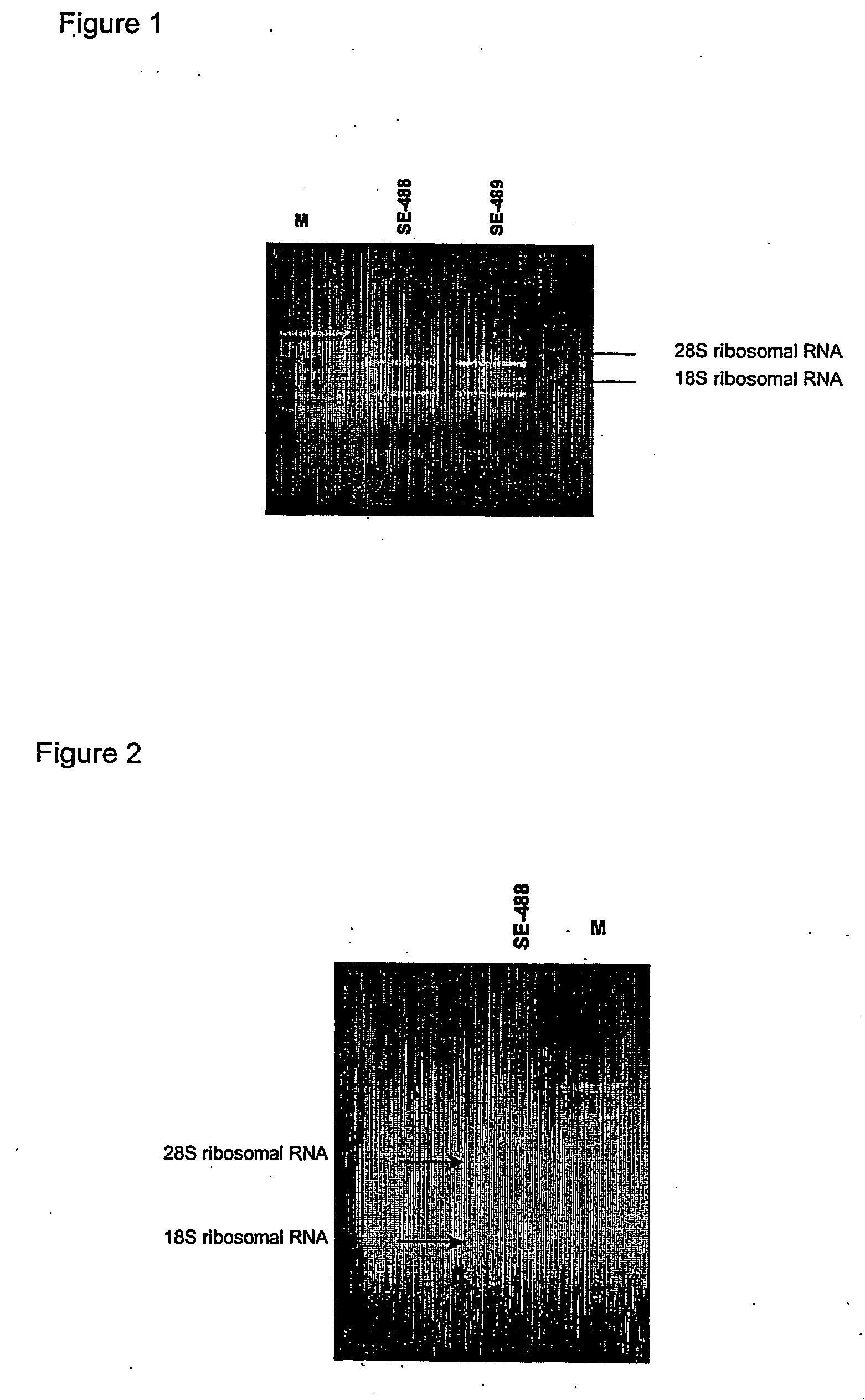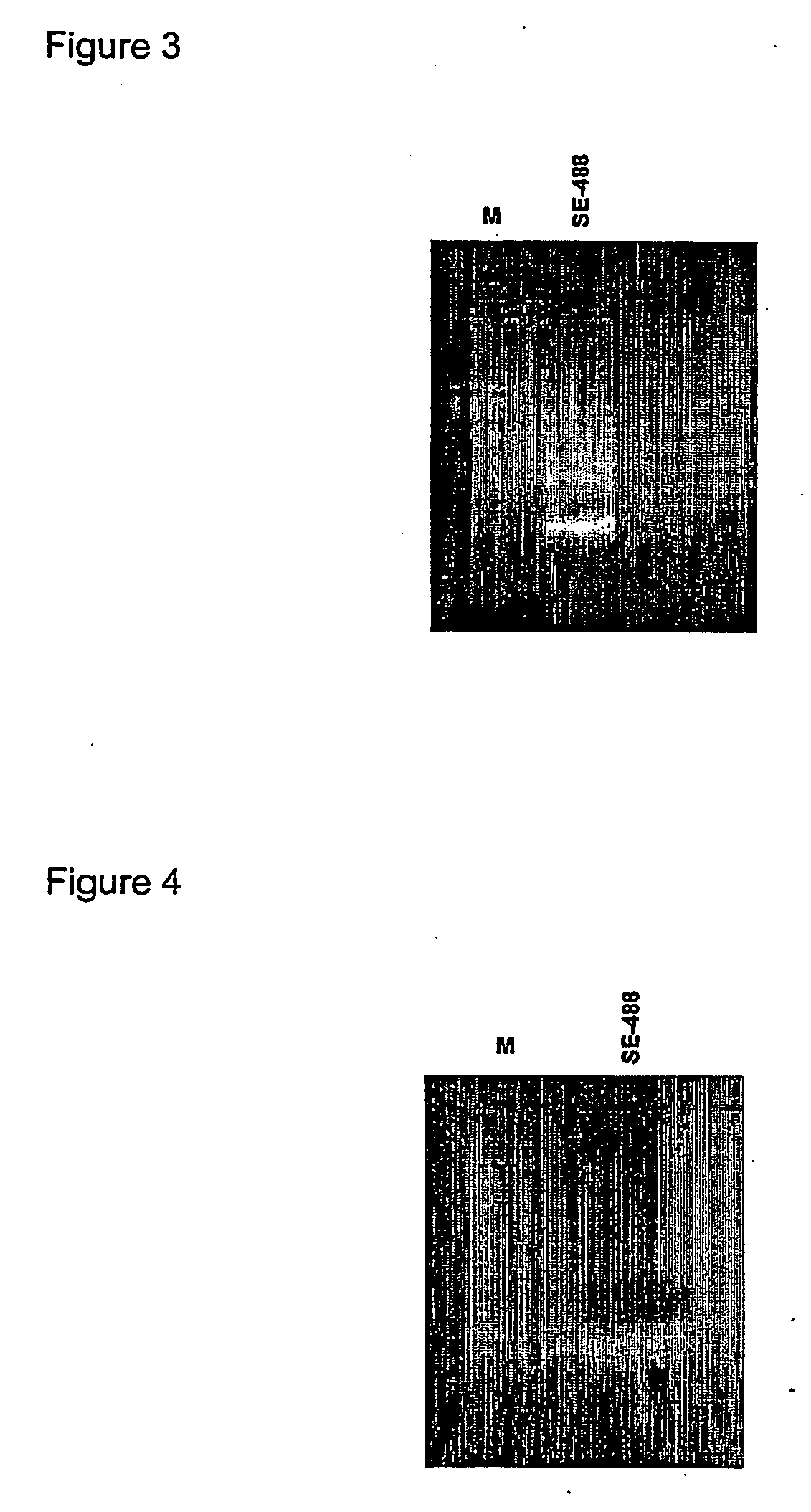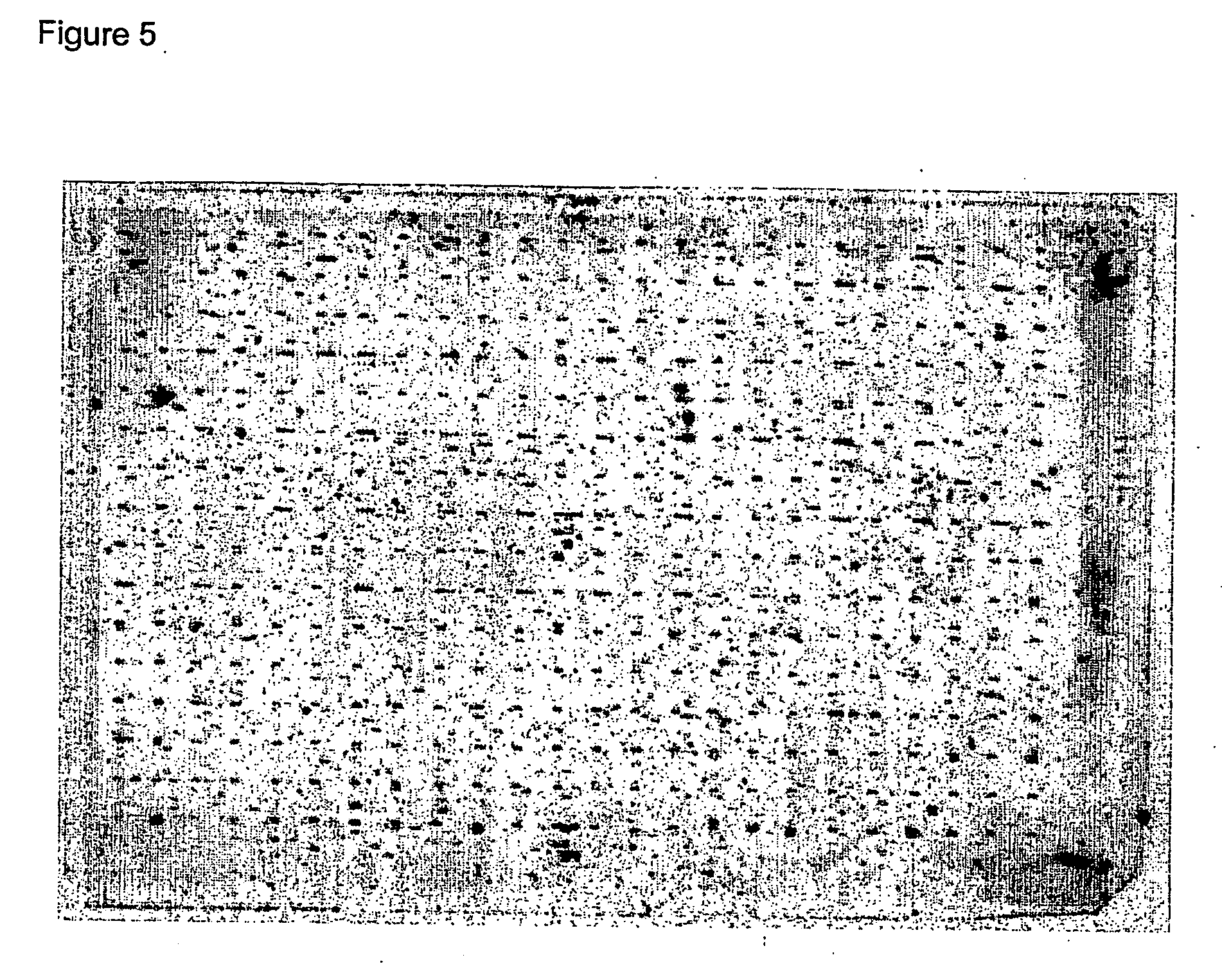Restoration of methylation states in cells
a methylation state and cell technology, applied in the field of methylation state recovery in cells, can solve the problems of increasing the disability of the aging individual, toxic side effects, and inability to selectively and co-ordinately de-methylate or methylate specific cs in the genome of living cells, and achieves the effect of amplifying
- Summary
- Abstract
- Description
- Claims
- Application Information
AI Technical Summary
Benefits of technology
Problems solved by technology
Method used
Image
Examples
Embodiment Construction
Methods
Determining Methylation Signatures of Cells
Bisulphite Treatment of DNA
[0068] To 2 μg of DNA, which can be pre-digested with suitable restriction enzymes if so desired, 2 μl ( 1 / 10 volume) of 3 M NaOH (6 g in 50 ml water, freshly made) was added in a final volume of 20 μl. The mixture was incubated at 37° C. for 15 minutes. Incubation at temperatures above room temperature can be used to improve the efficiency of denaturation.
[0069] After the incubation, 208 μl 2M Sodium Metabisulphite (7.6 g in 20 ml water with 416 ml 10 N NaOH; BDH AnalaR #10356.4D; freshly made) and 12 μl of 10 mM Quinol (0.055 g in 50 ml water, BDH AnaIR #103122E; freshly made) were added in succession. The sample was overlaid with 200 μl of mineral oil. The sample was then incubated overnight at 55° C. Alternatively the samples can be cycled in a thermal cycler as follows: incubate for about 4 hours or overnight as follows: Step 1, 55° C. / 2 hr cycled in PGCR machine; Step 2, 95° C. / 2 min. Step 1 ca...
PUM
| Property | Measurement | Unit |
|---|---|---|
| volume | aaaaa | aaaaa |
| volume | aaaaa | aaaaa |
| volume | aaaaa | aaaaa |
Abstract
Description
Claims
Application Information
 Login to View More
Login to View More - R&D
- Intellectual Property
- Life Sciences
- Materials
- Tech Scout
- Unparalleled Data Quality
- Higher Quality Content
- 60% Fewer Hallucinations
Browse by: Latest US Patents, China's latest patents, Technical Efficacy Thesaurus, Application Domain, Technology Topic, Popular Technical Reports.
© 2025 PatSnap. All rights reserved.Legal|Privacy policy|Modern Slavery Act Transparency Statement|Sitemap|About US| Contact US: help@patsnap.com



